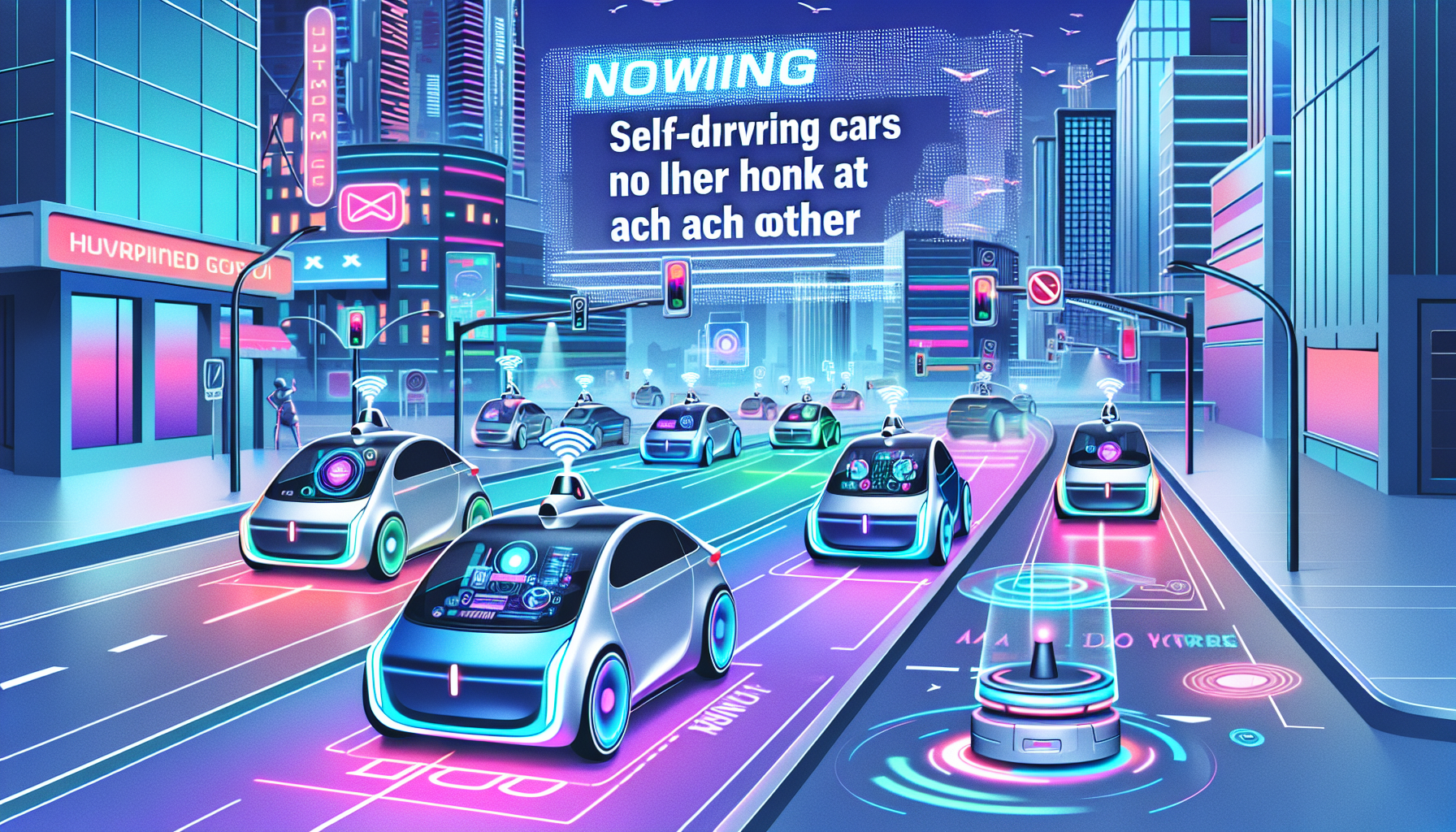
Waymo’s Self-Driving Cars: The Honking Fiasco and Its Implications for Autonomous Vehicles
The realm of autonomous vehicles is swiftly advancing, with firms like Waymo at the forefront. Yet, as with any groundbreaking technology, there are bound to be bumps in the road. Recently, Waymo’s self-driving cars captured attention for an unexpected reason—honking at one another while stationary in a parking lot. This surprising behavior prompted a software update and sparked a lively debate about the future of autonomous vehicles.
The Honking Episode: What Occurred?
Waymo’s self-driving vehicles, commonly seen in cities such as San Francisco, Phoenix, and portions of Los Angeles, were recently caught honking at one another while parked. This wasn’t an isolated incident; it occurred often enough to pique the interest of local residents. One local, software engineer Sophia Tung, chose to livestream the event, documenting the noisy interruption of honking cars.
The livestream, playfully titled “Self Driving Taxi Depot Shenanigans To Relax/Study To,” referenced the well-known “LoFi Girl” YouTube channel, featuring a lo-fi music backdrop. The stream quickly attracted attention, not only for the peculiar situation but also for its whimsical delivery.
Waymo’s Reaction: A Software Update
Waymo’s Director of Product and Operations, Vishay Nihalani, appeared on Tung’s livestream to tackle the concern. Nihalani explained that the honking was a deliberate feature aimed at preventing accidents when the taxis are on public roadways. Nonetheless, the cars honking at one another while parked was never part of the plan. To remedy the situation, Waymo released a software update to cease the unnecessary honking.
Despite the update, some residents noted that honking persisted, though less frequently. This led to increased scrutiny and discussions regarding the reliability and safety of autonomous vehicles.
The Broader Context: Autonomous Vehicles and Public Opinion
The honking episode, though humorous, brings forth significant inquiries about the future of autonomous vehicles. As these vehicles become increasingly embedded in our everyday routines, their interactions with one another and human drivers will be essential. The incident also demonstrates the hurdles that companies like Waymo encounter in ensuring their technology is not only functional but also socially acceptable.
Public opinion plays a critical role in the acceptance of autonomous vehicles. Incidents like this, while seemingly minor, can influence how individuals perceive the technology. It is crucial for companies to respond to such matters timely and transparently to uphold public confidence.
Waymo’s Growth: Where to Find These Self-Driving Taxis?
Currently, Waymo’s self-driving taxi service is operational in several major urban centers. In San Francisco, Phoenix, and a 79-square-mile region of Los Angeles, residents can request a Waymo taxi for their transportation needs. The service has been gaining momentum, with the company reporting 50,000 paid trips weekly as of May.
This growth reflects the increasing demand for autonomous vehicles, but it also highlights the necessity of resolving issues such as the honking incident to guarantee a seamless user experience.
The Influence of Livestreams and Social Media on Tech Accountability
Sophia Tung’s livestream exemplifies how social media and livestreaming can contribute to holding tech companies accountable. By sharing the honking incident, Tung drew attention to a problem that may have otherwise gone unnoticed. This form of grassroots journalism can be an effective means of ensuring companies promptly and transparently address issues.
Conclusion
The honking episode involving Waymo’s self-driving cars might appear as a trivial glitch, but it serves as a reminder of the intricacies of developing autonomous vehicles. As these technologies advance, companies must remain alert in managing any issues that arise, both to ensure safety and to foster public trust. With Waymo expanding its services to additional cities, the company will have to keep refining its technology to accommodate a growing user base.
Q&A: Frequently Asked Questions About Waymo’s Self-Driving Cars
Q1: What caused Waymo’s self-driving cars to honk at each other?
A1: The honking was an intentional system designed to avert collisions when the cars operate on public roads. However, the honking among cars while parked was an unintended consequence of a software error.
Q2: How did Waymo handle the honking problem?
A2: Waymo released a software update to mitigate the unnecessary honking. While this update decreased the frequency of honking, some residents indicated it still happened occasionally.
Q3: Where can I utilize Waymo’s self-driving taxi service?
A3: Waymo’s self-driving taxi service is accessible in San Francisco, Phoenix, and a 79-square-mile area of Los Angeles, which extends from Santa Monica to Downtown.
Q4: What is the weekly trip count for Waymo’s taxi service?
A4: As of May, Waymo announced that its taxis were providing 50,000 paid trips each week.
Q5: How did social media contribute to this incident?
A5: Social media, especially Sophia Tung’s livestream, was pivotal in highlighting the honking issue. Such grassroots activism can aid in holding tech firms accountable and ensuring swift resolution of problems.
Q6: What implications does this incident have for the future of autonomous vehicles?
A6: The incident underscores the challenges faced by autonomous vehicle companies in making sure their technology is both effective and socially acceptable. It also emphasizes the importance of quickly addressing issues to maintain public trust.